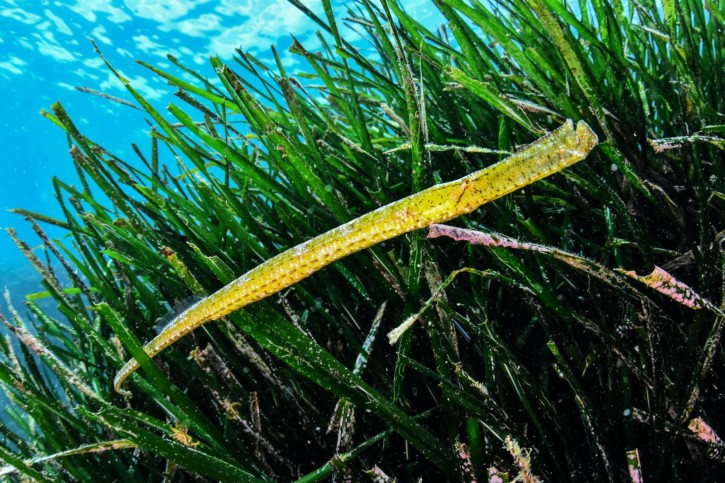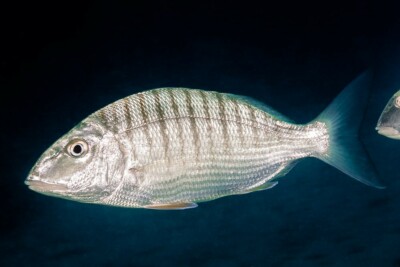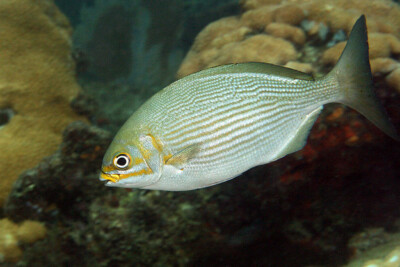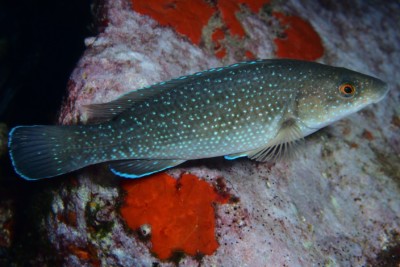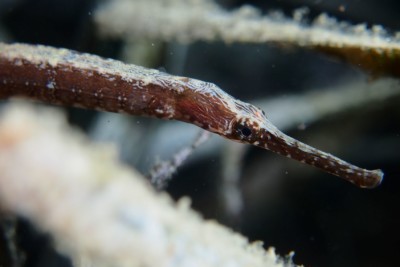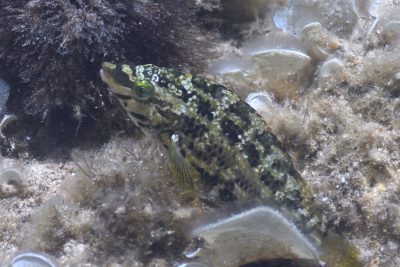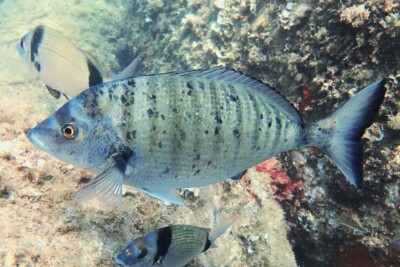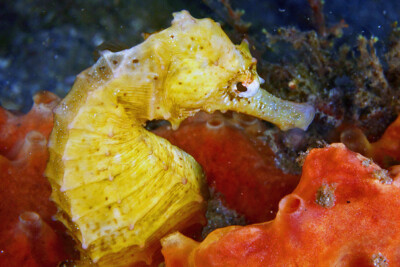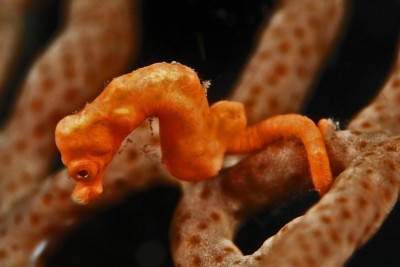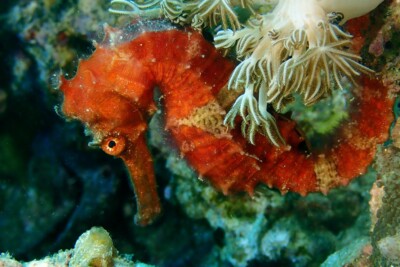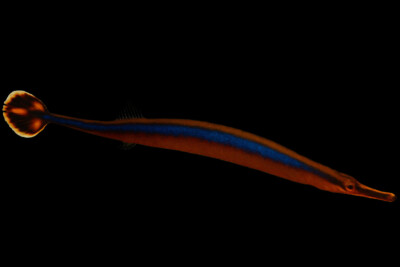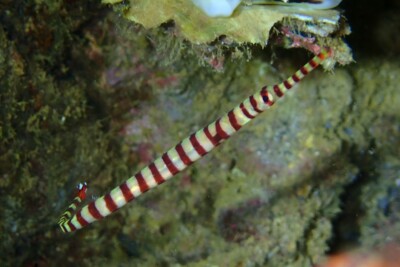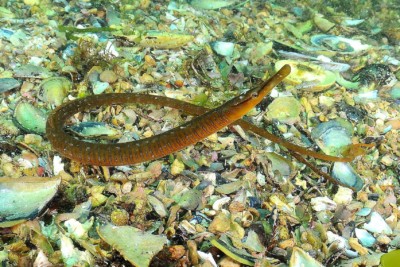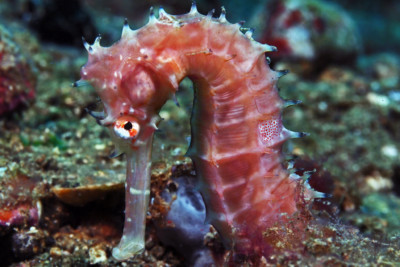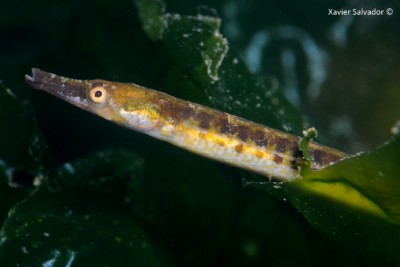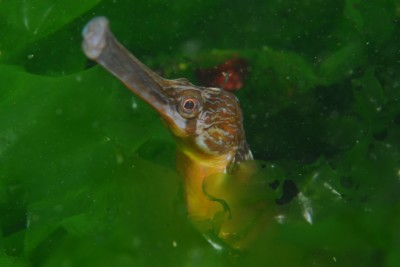broadnosed pipefish
| Family | Syngnathidae |
|---|---|
| Genus | Syngnathus |
| IUCN category (World) | LC |
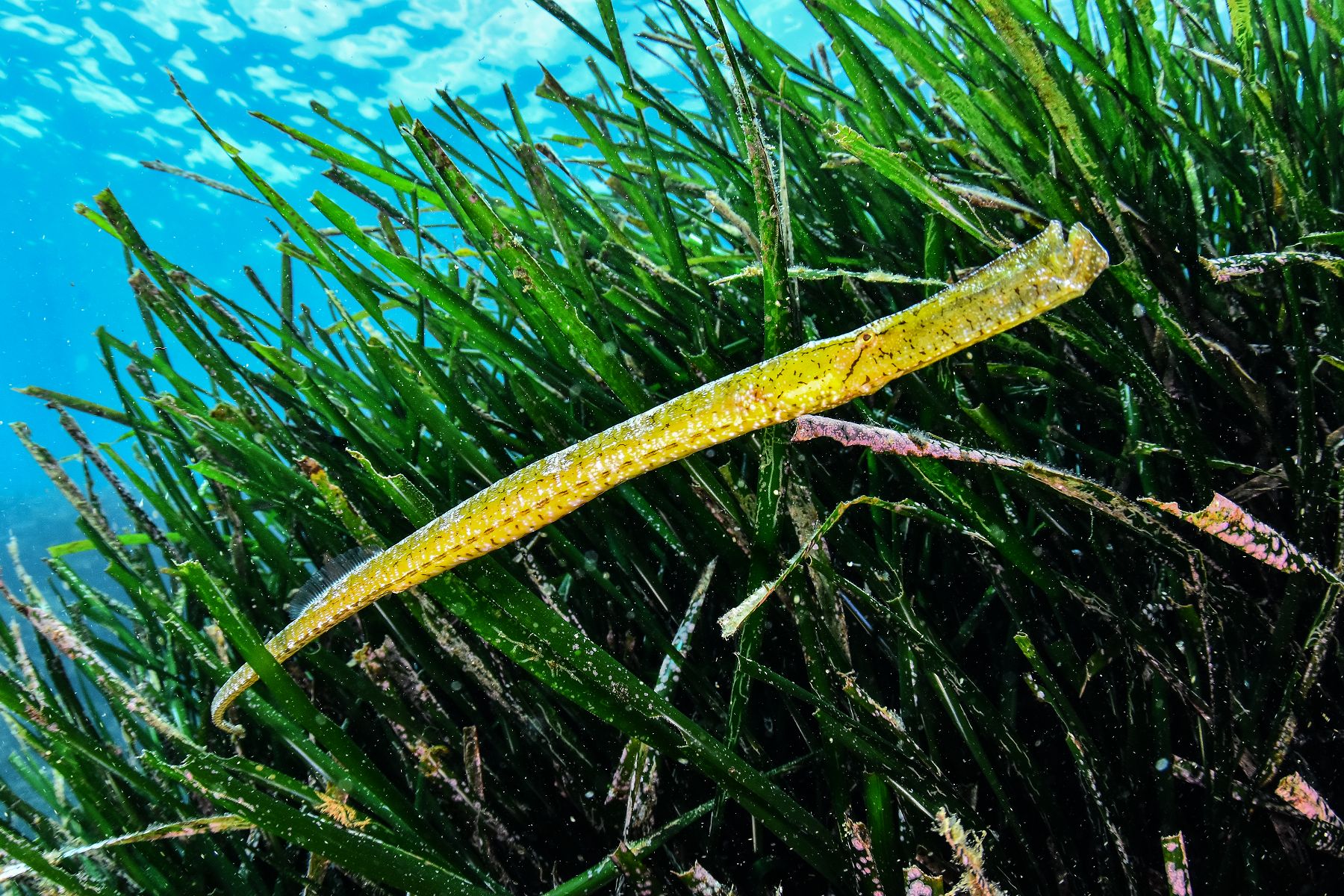

Introduction
Syngnathus typhle, commonly known as the broadnosed pipefish, is a marine fish native to the eastern Atlantic coast. It is also found in the Mediterranean Sea and the Black Sea.
Not very shy, this species is easily approached by divers. The main challenge lies in locating the individual, as it lives camouflaged in seagrass meadows.
Who is it?
Morphology
-
Average size30 cm
-
Maximum size35 cm
-
Mimicryplants
-
Average size30 cm
-
Maximum size35 cm
-
Mimicryplants
How to recognize This fish ?
The broadnosed pipefish is a solid color with a greenish to beige body, marbled with white. The fusiform silhouette, ringed, laterally flattened with a snout of equal height and in continuity with the body, is characteristic of the species.
The mouth is small and directed upwards. Pelvic fins are absent, other fins are reduced, and the caudal fin is rounded. With an adult size of over 35 centimeters, these fish are among the largest pipefishes recorded in their environment.
Sexual dimorphism
There is no apparent dimorphism in this species except for the presence of the male's ventral incubation pouch.
Behaviour & Life cycle
-
dietcarnivorous
-
Sociabilitysolitary
-
territorialNo
-
Way of livingdiurnal
The broadnosed pipefish is a solitary fish that typically inhabits seagrass beds or algae debris. This calm and not very shy fish uses its mimicry with vegetation to go unnoticed. It is an active predator that feeds on zooplankton, small crustaceans, or fish larvae.
Reproduction
-
Reproductionovipare
The broadnosed pipefish is a gonochoristic oviparous fish. The breeding period extends from May to October. The female lays eggs that will be inserted and fertilized by the male in his ventral incubation pouch.
Females mate with several different males during the summer. They lay eggs every 48 hours, and the male can carry up to 40 eggs.
After four weeks of male incubation, larvae of about 2 centimeters are released. The young are autonomous and already have their adult form.
Harmless species
This species does not pose a particular danger to humans in case of encounters in its natural environment.
Origin and distribution
What is its habitat?
Natural environment characteristics
-
Temperature8 - 24 °C
-
Depth1 - 20 m
Biotope presentation
The broadnosed pipefish is most commonly found at depths of less than 20 meters. This species particularly favors seagrass beds or clusters of dead leaves where it camouflages itself.
Species of the same biotope
Fishkeeping
Not recommended
We do not recommend keeping this species in an aquarium. It has unpredictable needs which, if not met, generate significant stress, potentially leading to a shorter life expectancy, an interruption of its growth or the development of pathogens.
To go further
Sources & Contributions
Participation & Validation
The Fishipedia team and specialist contributors are committed to providing high-quality content. However, although the information comes from scientific sources or testimonials from specialists, the cards may contain inaccuracies.

Adrien Falzon
Translation
Translation done with the valuable contribution of our translators, who make this information available to a wider audience. We sincerely thank them for their commitment.
Scientific partners
Tags
Species of the same family
Same genus
Species of the same biotope
